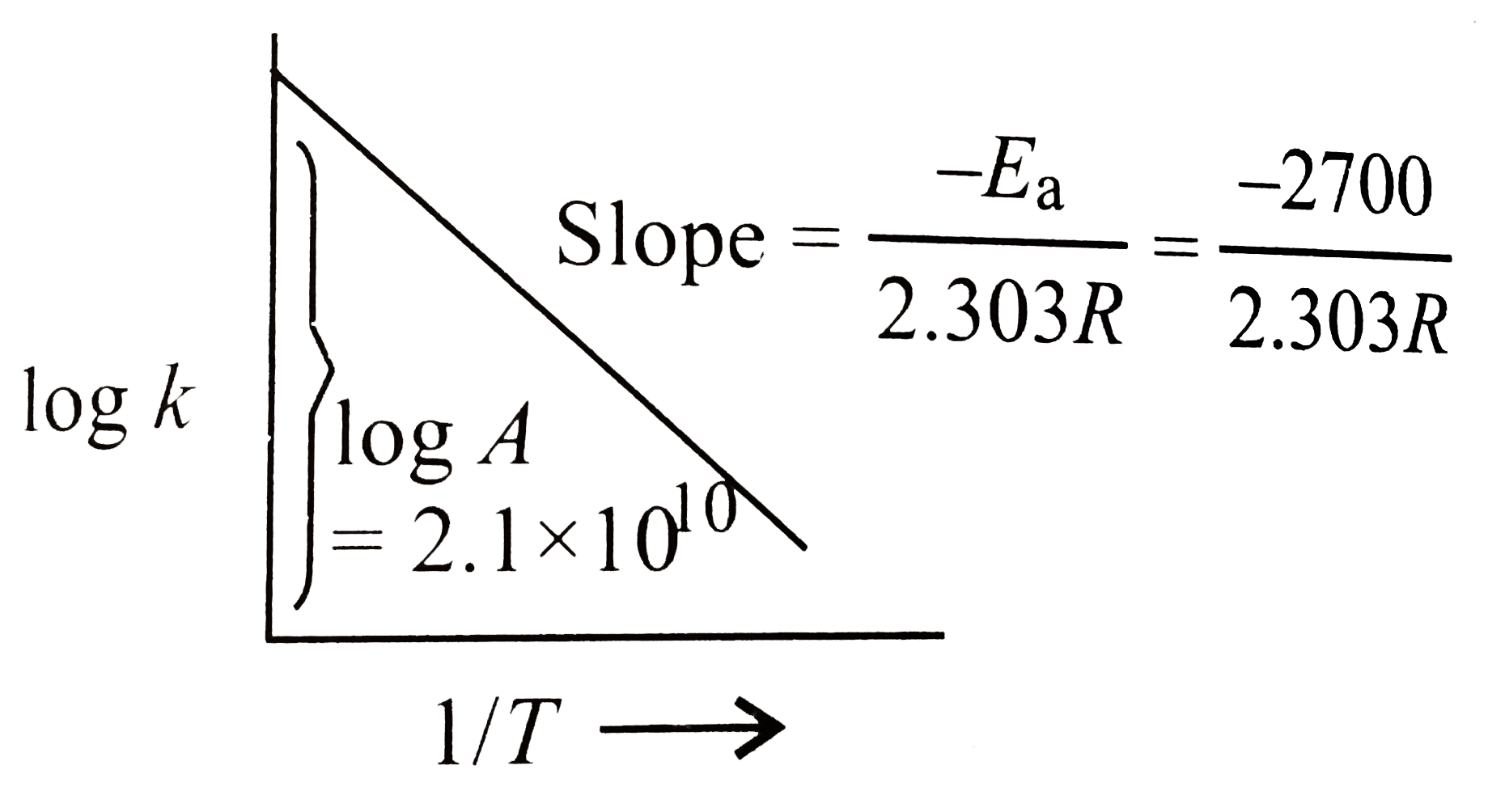The rate constant of a reaction is given by k=2.1×1010exp(−2700/RT). It means that
logk versus 1/T will be a straight line with slope =−27002.303R
logk versus 1/T will be straight line with intercept on logk axis =log(2.1×1010).
The number of effective colliisons are 2.1×1010cm−3s−1.
Half-life of the reaction increase with increase of temperature.
The correct Answer is:A, B
For Arrhenius equation k=Ae−Ea/RT
=2.1×1010×e−2700/RT
or
logk=logA−Ea2.303RT=log2.1×1001−27002.303RT
Plot of logk vs 1/T

Topper's Solved these Questions
- CHEMICAL KINETICSBOOK - CENGAGE CHEMISTRYCHAPTER - CHEMICAL KINETICSEXERCISE - Exercises Single Correct
177 Videos
- CHEMICAL KINETICSBOOK - CENGAGE CHEMISTRYCHAPTER - CHEMICAL KINETICSEXERCISE - Exercises Assertion-Reasoning
22 Videos
- CHEMICAL KINETICSBOOK - CENGAGE CHEMISTRYCHAPTER - CHEMICAL KINETICSEXERCISE - Exercises Linked Comprehension
59 Videos
- CARBOXYLIC ACIDS AND THEIR DERIVATIVESBOOK - CENGAGE CHEMISTRYCHAPTER - CARBOXYLIC ACIDS AND THEIR DERIVATIVESEXERCISE - Exercises Archives (Analytical And Descriptive)
34 Videos
- COORDINATION COMPOUNDSBOOK - CENGAGE CHEMISTRYCHAPTER - COORDINATION COMPOUNDSEXERCISE - Archives Subjective
18 Videos
Similar Questions
The rate constant of a reaction is given by k=2.1×1010C−27002.303R
It means that
View SolutionThe rate constant of a reaction is given as
k=2.1×1010e−2700/RT
It means that
log k vs 1/T will be a straight line with intercept on log k axis=log2.1×1010.
Number of effective collisions of temperature are 2.1×1010cm−3s−1.
Half-life of a reaction increases of temperature.
logk vs 1/T will be a straight line with slope=−27002.303R.
Which of the above statements are true? Choose the correct option.
View Solution
Knowledge Check
The rate constant of a reaction is given by k=2.1×1010exp(−2700/RT). It means that
Alog k versus 1T will be a straight line with slope =−27002.303RBlog k versus 1T will be a straight line with intercept on axis = 10.32CWhen T becomes infinite , k=2.1×1010Dk is independent of temperatureThe rate constant of a reaction is given by k=2.1×1010exp(−2700/RT). It means that
Alog k vs. 1/T will be a straight line with slope
=−27002.303 RBlog k vs. 1/T will be a straight line with intercept on log k axis =2.1×1010CThe number of effective collisions are 2.1×1010 cm−3 sec−1DHalf life of the reaction increases with increase of temperature.The rate constant of a reaction is given as
k=2.1×1010e−2700/RT
It means that
log k vs 1/T will be a straight line with intercept on log k axis=log2.1×1010.
Number of effective collisions of temperature are 2.1×1010cm−3s−1.
Half-life of a reaction increases of temperature.
logk vs 1/T will be a straight line with slope=−27002.303R.
Which of the above statements are true? Choose the correct option.AI and IIBII and IIICIII and IVDI and IV
A reaction rate constant is given by
k=1.2×1014e−2500RTs−1. It means
View SolutionA reaction rate constant is given by : K=1.2×1014e−25000RTsec−1. It means :
View SolutionThe rate constant for a second order reaction is given by k=(5×1011)e−29000k/T. The value of Ea will be:
View SolutionA reaction rate constant is given by : K=1.2×1014e−25000RTsec−1. It means :
View SolutionThe rate constant for a reaction is 10.8×10−3mol L−1. The reaction obeys:
View Solution
